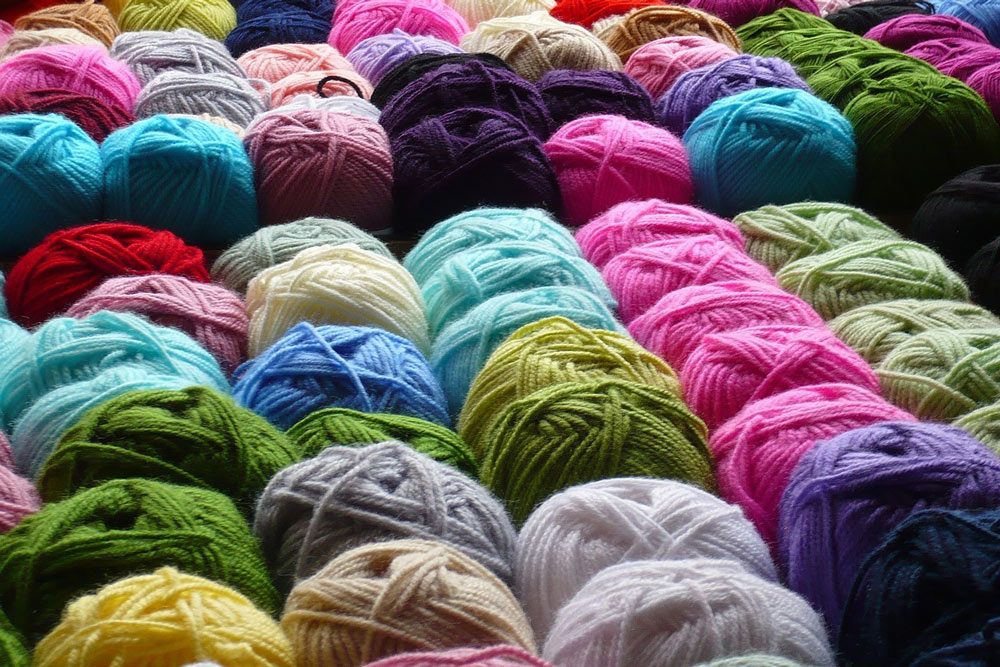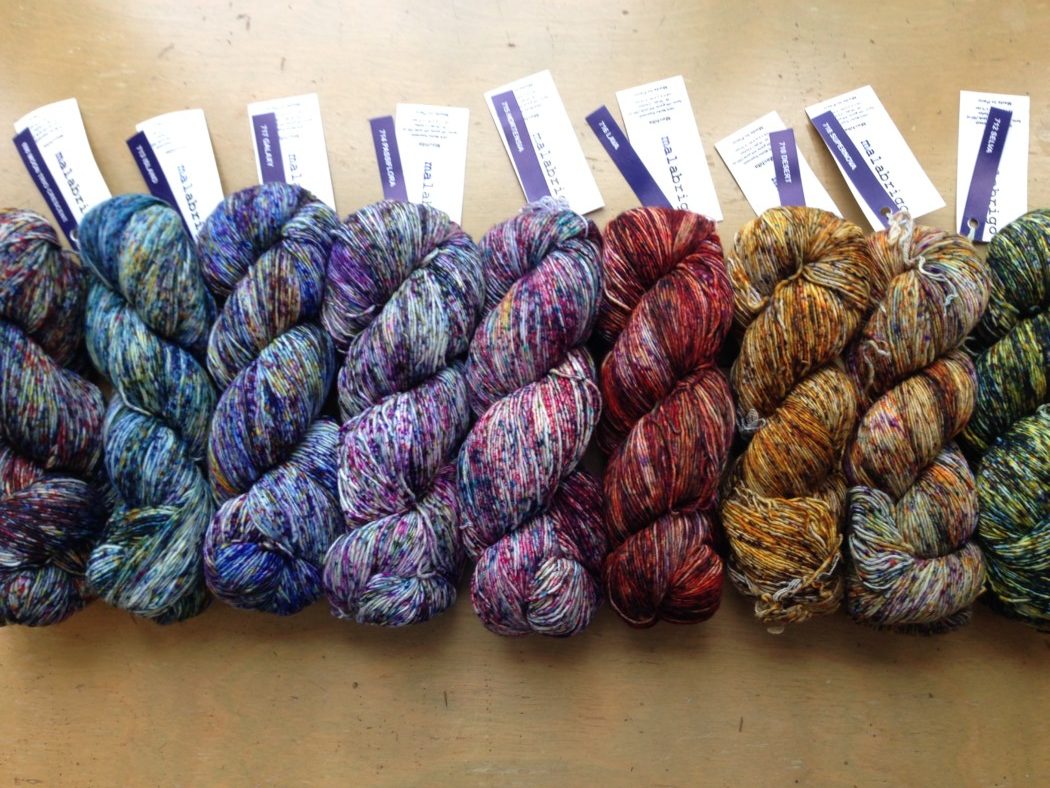Last Updated on June 3, 2024 by Annie Baldwin
The acrylic yarn has become incredibly popular over the years for its affordability and versatility.
But with growing concerns around sustainability and the impact of textiles, many crafters are wondering: Is acrylic yarn environmentally friendly?
Is Acrylic Yarn Environmentally Friendly?

Acrylic yarn is not environmentally friendly.
It is made from non-renewable petroleum resources, does not biodegrade, and releases microplastics that pollute oceans and waterways.
Acrylic should be avoided by those concerned about sustainability.
Key Points
- Acrylic yarn is made from non-renewable petroleum
- It does not biodegrade and takes hundreds of years to decompose
- Acrylic releases microplastics when washed that pollute oceans
Our Opinion
In our opinion, acrylic yarn poses significant environmental risks and cannot be considered a sustainable fiber.
The shedding of microplastics is especially concerning, as these accumulate in waterways and the food chain.
We recommend avoiding acrylic yarn and choosing more eco-friendly natural fiber yarns instead.
Is Acrylic Yarn Eco-Friendly?

The short answer is no. Acrylic yarn is considered unsustainable for a few key reasons:
- It’s made from plastic – Acrylic yarn is a synthetic fiber produced from petroleum, a non-renewable resource.
- Non-biodegradable – Unlike natural fibers like cotton or wool, acrylic does not biodegrade, meaning it persists in landfills.
- Microplastic pollution – When washed, acrylic sheds tiny plastic microfibers that pollute waterways and harm marine life.
- Toxic chemicals – The production of acrylic yarn involves carcinogenic chemicals that can be absorbed through skin contact.
The bottom line is acrylic yarn requires significant resources to produce and creates lasting environmental damage. More eco-friendly alternatives include plant-based yarns like cotton, linen, hemp, and bamboo. While pricier, these natural fibers are biodegradable and less harmful overall.
So if sustainability is a priority, it’s best to avoid acrylic yarn where possible. With some clever substitutions, you can still enjoy fiber crafts with a cleaner conscience!
How Is Acrylic Yarn Made?
The production process of acrylic yarn starts with the raw material, acrylonitrile. This is a petroleum-based compound that requires significant energy and resources to extract and refine into a polymer resin.
The polymer then goes through a wet spinning process to create the acrylic fiber filaments. This involves forcing the melted acrylic through tiny holes into a chemical bath that hardens the strands. The filaments are stretched, washed, dried, and twisted into yarn.
Additives are incorporated during production to give acrylic yarn desirable properties like machine washability, colorfastness, stretch, and softness. However, some additives raise concerns about toxicity.
The resulting acrylic yarn is lightweight, warm, and inexpensive. However, the intensive manufacturing process relies heavily on chemicals and fossil fuels. This makes acrylic less sustainable than natural fibers like wool or cotton.
While acrylic yarn offers conveniences for crafters, its environmental drawbacks are important to consider. Seeking out alternative yarns is one way to reduce the impacts of synthetic plastics and shift towards more eco-conscious crafting.
What Is the Environmental Impact of Acrylic Yarn?
Acrylic yarn takes a toll on the environment in a few key ways. First, producing the raw acrylic fiber requires significant energy and crude oil. This depletes limited resources and leads to greenhouse gas emissions.
Next, the manufacturing process uses many harsh chemicals. Some of these are known carcinogens that put factory workers at risk. The toxins also get released into the local environment.
When acrylic garments are washed, tiny plastic microfibres shed and flow into waterways. These microplastics accumulate in the environment and marine life, with unknown consequences.
At the end of life, acrylic contains plastic polymers that do not biodegrade. Items made from acrylic yarn will sit in landfills for centuries without breaking down.
The durability that makes acrylic yarn convenient also makes it persist in ecosystems. Choosing more sustainable yarns like wool, cotton, linen or hemp can help reduce plastic pollution and waste.
Being mindful of the impacts of different yarn fibers allows crafters to make informed choices. Seeking out environmentally friendly materials is one way to pursue the craft sustainably.
Acrylic Yarn vs. Natural Fiber Yarns

When comparing acrylic to natural fibers like wool, cotton, or linen, there are tradeoffs to consider.
Acrylic is inexpensive, versatile, and durable. However, it comes from nonrenewable petroleum resources and contributes to plastic pollution.
Natural fibers are renewable and biodegrade at the end of life. However, they may require more water, land, and pesticides to produce than synthetics.
Wool and linen have lower environmental impacts than cotton. Using organic or recycled natural fibers helps reduce their footprint.
Blends marry the benefits of synthetics and natural fibers. An acrylic-wool blend makes wool more affordable and durable.
There is no universal best or worst yarn fiber. Needs and preferences play a role in finding the right balance.
Seeking third-party sustainability certifications on yarn helps identify environmentally responsible options.
In the end, using any yarn resourcefully, reducing waste, and disposing of it properly makes a difference to the planet.
Sustainable Alternatives to Acrylic Yarn
For knitters and crocheters seeking greener options, there are many alternatives to conventional acrylic yarn.
Look for yarns made from organic cotton, linen, hemp, bamboo, and other fast-growing plants. These renewable resources require fewer pesticides and less water than conventional cotton.
Wool, alpaca, and other animal fibers from responsibly raised animals are also renewable options. Seek sources with animal welfare certifications.
Recycled polyester and nylon yarns divert plastic from landfills. Brands like Repreve and Econyl transform waste into durable yarn.
Upcycled yarns give new life to scrap textiles. Companies like Knitting for Charity and Wool and the Gang reduce waste through creative reuse.
Support small, local farms and producers. Purchasing yarn directly from the source cuts transportation impacts.
Opt for undyed, natural color yarns. If buying dyed yarn, choose low-impact dyes like natural indigo.
Buying less, using yarn scraps creatively, and repairing worn items also reduce waste. We can all knit and crochet more sustainably.
FAQ
What Type of Yarn Is Most Environmentally Friendly?
Natural fibers like cotton, wool, hemp, and linen are more environmentally friendly than synthetic yarns. They are biodegradable and renewable.
Does Acrylic Yarn Create Microplastics?
Yes, acrylic yarn sheds microplastics when washed. These microplastics end up polluting waterways and oceans.
How Long Does Acrylic Yarn Take To Biodegrade?
Acrylic yarn does not biodegrade. It takes hundreds of years to decompose.
Is Acrylic Fabric Eco-Friendly?
No, acrylic fabric is not eco-friendly. It is made from non-renewable resources and does not biodegrade. The microplastics it releases are harmful to the environment.
Conclusion
Acrylic yarn is not an environmentally friendly choice. It is made from non-renewable petroleum resources, does not biodegrade, and releases harmful microplastics into waterways when washed. Choosing natural fiber yarns like cotton, wool, and linen that are biodegradable and renewable is a more eco-friendly option for knitters and crocheters concerned about sustainability.
